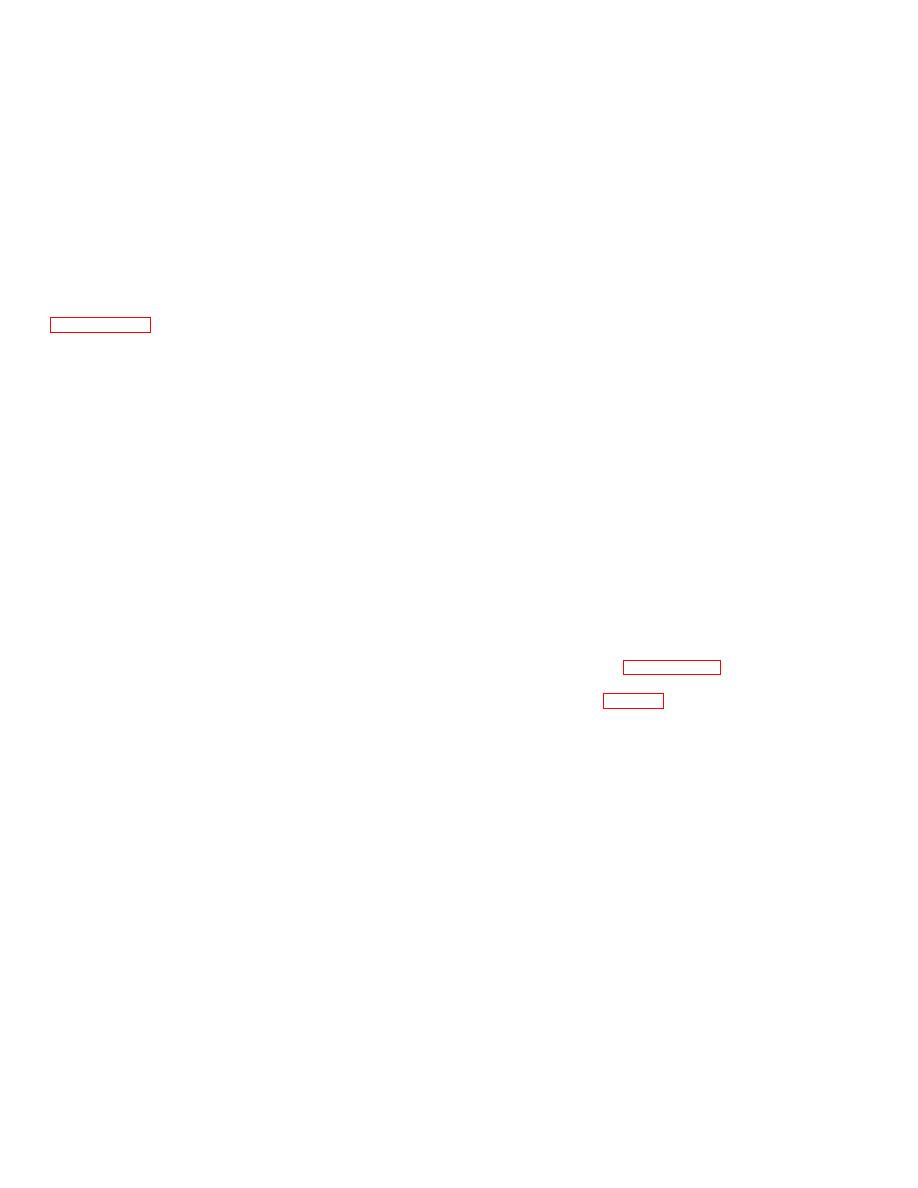
TM 11-6780-225-35
CHAPTER 3
DIRECT AND GENERAL SUPPORT MAINTENANCE
Section I. GENERAL
3-1.
Scope of Direct and General Support
Scribe.
Maintenance
Multimeter AN/USM-33.
Cleaning compound.
The maintenance duties assigned to direct and general
Lint free cloth.
support are listed below together with references to the
Mild hand soap.
paragraphs covering the specific maintenance functions.
Multimeter TS-352 B,/U.
The tools, materials, and test equipment are listed in
Pipe joint compound.
Pipe wrench, straight, 12-inch.
a. Repair (paras 38 to 315).
Tube cutter.
b. Troubleshooting (para 33).
Snapring plier set.
3-2.
Tools, Materials, and Test Equipment
Spanner wrench, 1 inch.
Required
Toolkit, Photographic Repairman TK-77/GF.
Toolkit, Photographic Repairman TK-109/GF.
The following tools, materials, and test equipment are
Wire brush.
required for direct and general support maintenance:
Tru Arc pliers.
Section II. TROUBLESHOOTING
isolated by sight, touch, or hearing. The majority of
3-3.
General Instructions
faults, however, must be isolated by electrical and
operational checks, and inspection of components.
Direct and general support troubleshooting includes all
the techniques outlined for operator's and organizational
3-4.
Troubleshooting Procedures
maintenance and any special or additional techniques
required to isolate a defective part. These procedures
are not complete in themselves but supplement the
To troubleshoot the darkroom, first perform the
procedures described for maintenance. The systematic
troubleshooting procedures given in the technical
troubleshooting
procedures,
which
begin
with
manuals listed in appendix A, and then use the
troubleshooting performed at an operational and
troubleshooting charts given below. Refer also to the
organizational level, must be completed by further
wiring diragrams (figs. 3-1, 5-1, and 5-2).
localizing and isolating techniques. Localization means
Before making any repair or replacements, make certain
tracing the fault to the component responsible for
that the component suspected of a malfunction is
abnormal operation. Isolation means tracing the fault to
defective, by performing the testing procedures outlined
a defective part.
Some faults can often be
in chapters 4 and 5.
3-1

